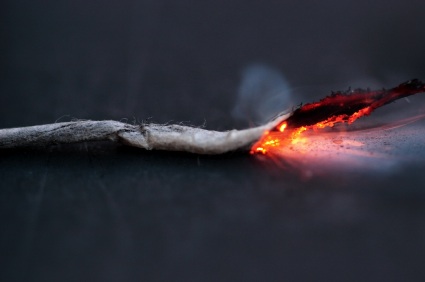Fun with fuses solution
Fun with fuses

You are given two fuses, each of which burns for exactly one minute. However, since the fuses are not of uniform thickness, they do not burn at a uniform rate along their lengths. How can you use the two fuses to measure 45 seconds?
Solution
The trick to solving this puzzle is to consider lighting the fuses at both ends. We know they don't burn evenly, but by lighting a fuse at both ends it will burn twice as fast, and burn itself out in half the time.
So to start off with light fuse A at one end, and light fuse B at both ends. Fuse B will burn out after 30 seconds. Fuse A has now been burning for 30 seconds and so has 30 seconds left to burn, so at this point light the other end of Fuse A. Fuse A is now burning twice as fast, and will extinguish after a further 15 seconds (half the time it had left to burn). Therefore Fuse A has burned for 45 seconds in total.
Chris Brett
Not necessarily true if burn rates are non uniform with respect to time.